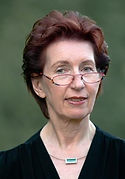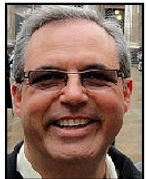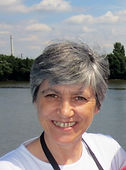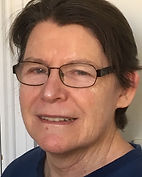Plenary Panel
Chair:
Prof. Gloria Stillman (Chairperson of ICTMA), Australian Catholic University
Panel members:
Prof. Susana Carreira, Prof. Gabriele Kaiser, Dr. Milton Rosa,
Universidade do Algarve University of Hamburg The Federal University of Ouro Preto
Plenary Panel
Scientific Standards and How We Can Achieve Them in Mathematical Modelling Educational Research
Susana will address the topic by examining the conceptual / theoretical expansion in research on teaching and learning mathematical modelling. Milton intends to speak on “From Ad Hoc Solutions to Scientific Invention: The Achievements of Scientific Standards in Ethnomodelling Research”. Gabriele will focus on “Methodological empirical standards (from a qualitative and a quantitative perspective) in the research on the teaching and learning of mathematical modelling.”
The structure of the session will be:
Short Introduction of Topic and Speakers by Chair (5 minutes)
Part 1: Presentation of (maximally) 10 minutes per panellist on the theme:
Do we have joint scientific standards in research on the teaching and learning of mathematical modelling and if yes, which are these? Are they specific for our topic?
Question and answer session with the audience
Part 2: Presentation of (maximally) 10 minutes per panellist on the theme:
How can we promote these joint scientific standards? Which actions seem to be necessary in the near future?
Question and answer session with the audience.
Part 3: Wrapping up and Thank you to speakers by Gloria Stillman (5 minutes)
More Details:
Part 1: Do we have joint scientific standards in research on the teaching and learning of mathematical modelling and if yes, which are these? Are they specific for our topic?
Susana: I will briefly review the theoretical expansion of the research field of teaching and learning mathematical modelling and applications. For that purpose I will draw on several literature reviews offered in relevant publications, such as the ICTMA book series, the latest ICME Monograph and also the several CERME Proceedings where an active Thematic Working Group on Applications and Modelling has been growing and evolving over time.
Some key points emerging from such a picture of the theoretical ideas undertaken by the research community will be highlighted, namely the prevailing perspectives and the related key concepts involved and also the emergent perspectives and some more recently developed concepts.
One of the systematically observed aspects in such overviews of the field is the increasing number of theoretical concepts and theoretical perspectives taking place in the work of individual researchers and research groups. The ideas of diversity, plurality, and inclusion are seen as trademarks of this field of research, which at a certain point has motivated several efforts at systematizing and organizing the spectrum of approaches in the research produced. One of the well-known proposals of such a systematization is the paper by Kaiser and Sriraman (2006), published in the ZDM Mathematics Education Journal.
Although from some authors’ point of view, this plurality may be seen as a positive sign of fertility and richness of the field, others have also pointed out that the proliferation of theoretical concepts and trends may be causing “conceptual fuzziness” and create divisions and communication difficulties in the overall activity of the community.
I will show how some perspectives seem to have gain more centrality over others and also how new theoretical concepts are evolving and being developed. I will also argue that it is possible to detect in the community a sensible aspiration of connecting and articulating theoretical perspectives and of envisioning a way of unifying the research in theoretical terms.
I will suggest that it is possible to find a theoretical common thread in many of the evolving concepts that have recently been proposed and used in recent studies. I will argue that this common thread can be traced back to the many relevant contributions in some of the early influential work that grew out of the ICTMA conferences. I would like to propose that the common thread is the development of the modeller thinking, where several theoretical concepts, among the most widespread and diffused in the research, can fit together. This also parallels with recent trends found in other areas of research in mathematics education, which have been advocating, for example, the development of algebraic thinking, of geometric thinking, of functional thinking, etc.
Milton: Mathematics is one of the most powerful instruments created by humanity that enables us to face and solve unpredicted phenomena. At the same time, historical evolution has enabled the development of diverse mathematical knowledge systems that provide explanations of daily problems and situations, which can lead us to elaborate ethno-models as representations of facts present in our diverse realities and contexts. The ethno-modelling process helps members of distinct cultural groups to draw information about their own realities through elaboration and representations that generate mathematical knowledge, which deals with creativity and invention in non-western/academic contexts.
In so doing, we ask: What are the possibilities of developing joint scientific standards in research on the teaching and learning of mathematical modelling if individuals and groups deal in different ways with the representations of selected facts and phenomena taken from diverse and different contexts? In this regard, by using an ethnomathematical perspective, in order to solve specific problems, members of distinct cultural groups create ad hoc[1] solutions and methods that are generalized to solve similar situations and, then, theories can be developed from these generalizations to help us understand these phenomena.
In the ethno-modelling context, members of these groups share how they know and do mathematics in ways that are quite different from academic-western mathematics. However, if there are scientific standard for the development of mathematical modelling on the process of teaching and learning mathematics, then they may be specific because through the elaboration of ethno-models, members of distinct cultural groups attempt to explain their surroundings and these explanations are organized as arts, techniques, theories, and strategies that help them to comprehend, explain, and deal with facts and phenomena they face daily. These procedures have been historically organized in different ways in diverse cultural groups, in distinct spatial and temporal contexts, which are related to the development of alternative mathematical systems that can be mathematized through the development of ethno-modelling.
Part 2: How can we promote these joint scientific standards? Which actions seem to be necessary in the near future?
Susana: The idea of border crossing has already got the attention of the research community and has been addressed, for example, in the ICTMA book edited by Stillman, Blum, and Kaiser (2017). This seems one possibility to move forward, in the sense that by articulating, combining or connecting theoretical concepts and perspectives we will know better what kinds of constructs, underlying assumptions, philosophical and epistemological viewpoints will be possible to incorporate into possible common theoretical lines.
The idea of a grand theory on teaching and learning mathematical modelling and applications is probably not a realistic achievement. However, a theory on the development of the modeller thinking may be within reach in the near future.
I will briefly illustrate my point by drawing on a quick example where I will hope to stimulate the audience to look at the ways in which a set of rather promising theoretical concepts would be possible to activate in a convergent way into the analysis and understanding of the development of the student modeller thinking.
In a way, I am not proposing joint standards in terms of the theoretical evolution but I am echoing some latent feeling about the need and/or advantage of a common theoretical view on the meaning and understanding of mathematical modelling in mathematics teaching and learning, also in the broader context of other specific theories in mathematics education. In my view this entails making good use of the wealth that we have so far managed to bring together in the field of research and to give it a more unifying sense that may allow respecting cultural and social perspectives that account for different contexts and educational systems in the world.
Milton: My presentation about ethno-modelling only reflects one of the trends of mathematical modelling in the Brazilian and international contexts. However, there are diverse approaches in this research area that show that the development of the Brazilian ways of doing mathematical modelling does not only reflect national and international trends, but also assumes its own identity.
Both internationally and in Brazil, there are distinct perspectives about the possibilities of the evolution of mathematical modelling as a didactic and pedagogical tool for the development of specific mathematical content, as well in relation to the comprehension of the development of the modelling process. On the other hand, there are possibilities about the relations between the sociohistorical context of the students and their participation in the modelling environments, as well about the epistemological issues related to the mathematization process, as well the relationships between modelling and John Dewey's progressive education with elements of Statistical Education. The connections between mathematical modelling and critical mathematics education and its socio-critical strand is also another possibility. In the Brazilian and international contexts, modelling highlights the relationship between its didactic approach and technologies, as well its relation to the development of distance learning.
Thus, in the context of theoretical, epistemological, and methodological diversity of approaches for the development of mathematical modelling, the possibilities of promoting scientific standardization, in my opinion, is a slow, continuous, and constant process that deserves the proposition of international debates so that we can understand the plurality of ideas, thoughts, procedures, and mathematical practices that can be mathematized through the modelling process, as well ethno-modelling.
Maybe, international cooperation and the development of joint research with international investigators seem to be creating a new starting point for initiating the discussions of joint scientific standards for mathematical modelling, if possible. On the other hand, it is necessary to ask if there is a necessity of promoting joint scientific standards for mathematical modelling.
References
Kaiser, G. & Sriraman, B., & (2006). A global survey of international perspectives on modelling in mathematics education. ZDM, 38(3), 302-310 .
Stillman, G.A., Blum, W., & Kaiser, G. (2017). Mathematical modelling and applications: Crossing and researching boundaries in mathematics education. Cham: Springer.
[1]Ad hoc is a Latin expression that means for this purpose. It generally means a solution designed for specific problems or tasks, non-generalizable, and which cannot be adapted to other purposes.



